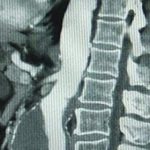1. In this retrospective cohort study, endovascular aneurysm repair was associated with significantly higher rates of long-term rupture and reintervention in comparison to open aneurysm repair.
2. Open aneurysm repair was associated with a significantly lower 6-year mortality rate and 6-year rupture rate compared to endovascular aneurysm repair, however, it was also associated with a significantly higher odds of 30-day mortality and complications.
Evidence Rating Level: 2 (Good)
Study Rundown: The use of endovascular repair techniques for abdominal aortic aneurysms (AAA) have increased over the past few decades, and now account for around 75% of intact AAA repairs. Although the Dutch Randomized Endovascular Aneurysm Management (DREAM) clinical trials demonstrated a decrease in perioperative morbidity and mortality with the endovascular repair of abdominal aortic aneurysms (EVAR) approach compared to open aneurysm repair (OAR), a 15-year follow-up showed mortality was significantly higher in the EVAR group. The concern for late aneurysm rupture and the increasing mortality rate of EVAR prompted further investigation. The objective of this retrospective cohort study was to compare long-term outcomes of EVAR and OAR. The exposure was first-time EVAR or OAR, and the primary outcomes were the 6-year all-cause mortality, rupture, and reintervention. Secondary outcomes included 30-day mortality, and perioperative complications. 6-year follow-up data of patients undergoing EVAR or OAR was analyzed between 2003 and 2018. Among 32 760 patients, 28 281 patients underwent EVAR and 4479 patients underwent OAR, and after propensity matching there were 2852 patients in each group. OAR was associated with a significantly lower 6-year mortality rate and 6-year-rupture rate, and reintervention, compared to EVAR. Overall mortality was found to be higher after elective AAA repairs with EVAR than OAR over 6-years, despite the reduced 30-day mortality and perioperative morbidity seen after EVAR. A limitation to this study is that only overall mortality was assess, not aneurysm related mortality. A major strength to this study however is large data set, and stratified analysis by year of abdominal aortic aneurysm repair.
Click to read the study in JAMA Network Open
Click to read an accompanying editorial in JAMA Network Open
Relevant Reading: A randomized trial comparing conventional and endovascular repair of abdominal aortic aneurysms
In-Depth [retrospective cohort]: This study compared long-term outcomes of endovascular, and open repair of abdominal aortic aneurysms among 32 760 patients (median [IQR] age, 75 [70-80]; 25 706 [78.5%] male), 28 281 whom underwent EVAR and 4479 patients who underwent OAR. After propensity matching a total of 2852 patients were in each group. After propensity score matching, over a 6-year period, patients who underwent OAR, compared to those who underwent EVAR, had significantly lower rates of mortality (548 deaths [35.6%] vs 608 deaths [41.2%]; HR, 0.83; 95% CI, 0.74-0.94; P = .002), rupture (117 patients [5.8%] vs 149 patients [8.3%]; HR, 0.76; 95% CI, 0.60-0.97; P=.03), and reintervention (190 patients [11.6%] vs 267 patients [16.0%]; HR, 0.67; 95% CI, 0.55-0.80; P <.001). OAR compared to EVAR was also associated with significantly lower rates of mortality from 1 to 2 years after dividing 6-year mortality. After diving 6-yar mortality over shorter intervals, OAR was associated with significantly lower rates of mortality from 1 to 2 years in comparison to EVAR (84 deaths [4.3%] vs 126 [6.7%]’ HR 0.63, 95%, 0.48-0.83; P = .001). Additionally, OAR vs EVAR mortality from 2 to 6 years (211 deaths [25.8%] vs 241 deaths [30.6%]; HR 0.73, 95%CI, 0.61 – 0.88; P =.001. OAR was associated with complications and a significantly higher odds of 30-day mortality (OR, 3.56; 95%, 2.41-5.26; P < .001). No differences in mortality were observed between OAR and EVAR at 1 year (235 deaths [9.3%] vs 241 deaths [9.2]; HR, 1.06; 95% CI, 0.89-1.27; P = .49).
Image: PD
©2022 2 Minute Medicine, Inc. All rights reserved. No works may be reproduced without expressed written consent from 2 Minute Medicine, Inc. Inquire about licensing here. No article should be construed as medical advice and is not intended as such by the authors or by 2 Minute Medicine, Inc.


